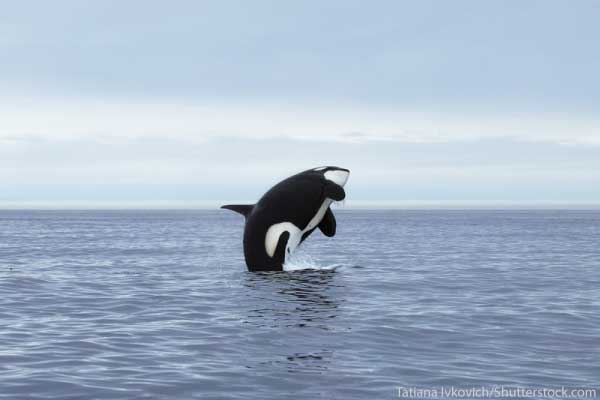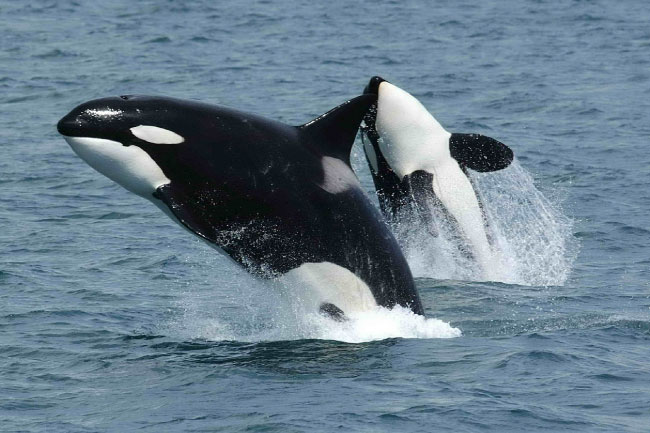Everyone knows that birds such as parrots can be trained to ‘speak’ (or at least to copy the sounds that humans make). But now the birds have got mammalian competition – in the shape of killer whales!
Wilkie The Speaking Killer Whale
Killer whales are the ocean’s apex predators. The ‘big cats’ of the seas, these fearsome aquatic mammals are famed for their speed, power and agility. What’s not quite as well-known is that these black and white hunters are also highly intelligent.
A study published in January 2018 by the Royal Society reveals that killer whales are among the very few animals that can imitate sounds … including human words.
The subject of the study was a captive 14-year-old killer whale named Wilkie. Wilkie lives with her calf at Marineland, an aquarium in Antibes, France.
Wilkie learns words after hearing them spoken by her trainers. Her vocabulary includes words such as ‘hello’, ‘one’, ‘two’ and ‘three’. She can even say ‘Amy’, the name of one of her trainers. Researchers found that Wilkie was able to learn new sounds relatively quickly, often requiring fewer than 10 tries.
Although killer whales lack vocal cords, the whistles, clicks and ‘squelches’ that Wilkie makes are recognizable as imitations of the words she has heard.
Killer Whale Dialects
In the murky underwater world in which they inhabit, whales are more reliant on sound than they are on sight. Observations of wild killer whales has found that different groups have their own ‘dialect’, and that these accents can be learned by other groups.
Killer whales produce sound by passing air through a structure known as the ‘phonic lips’, which is connected to the blow hole. The sounds are then amplified by an area of the head called the ‘melon’.
Killer whales use sound not only to communicate, but also to navigate and hunt. By listening to echoes of sounds they have made, the whales can build up a picture of what’s around them, a process known as echolocation.
Big Brains
Killer whales have the second-largest brains of all animals. Weighing between 12 and 15 lb. (5.4 and 6.8 kg), a killer whale's brain is around 5 times the size of a human's (which has an average weight of 2.7 lb. (1.2 kg).
Although having a large brain is not a definite indicator of intelligence, the most intelligent animals all tend to have larger than average brains in relation to body size.
Killer whales don’t simply rely on their strength and speed to survive. The live and hunt communally, and being smart – and able to communicate with the other members of the group – is essential for this kind of lifestyle.
Speaking Killer Whale: Conclusion
Killer whales have a fearsome reputation, and as ocean predators they have few equals. Despite this, there are no documented instances of a fatal attack by a killer whale on a human in the wild.
However, the next time you’re in the ocean, and you hear someone counting ‘one, two, three’ behind you, it may be a good idea to start swimming.
- You can find out more about killer whales here: Killer Whale Facts




